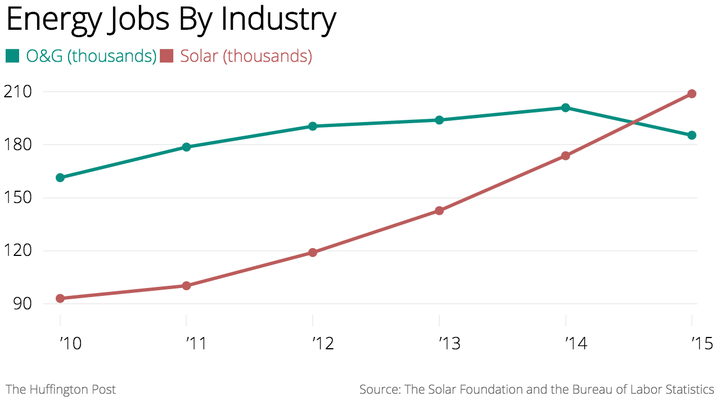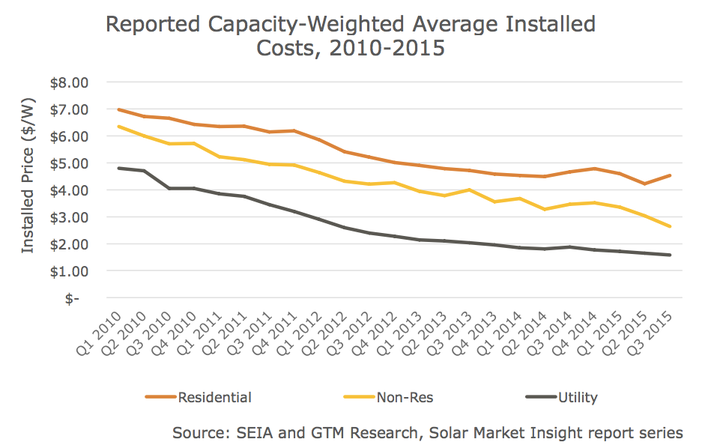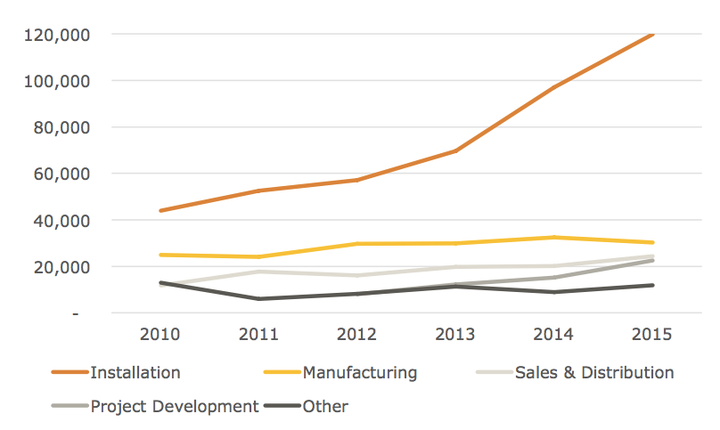
Solar is the energy employer of the future -- or at least that's how the numbers look today.
A new report on the state of the solar industry out Tuesday from the nonprofit Solar Foundation shows that there were almost 209,000 people who worked in the solar industry as of November 2015. Of those jobs, 90 percent only work on solar-related projects, according to the report.
For comparison, there were only about 185,000 people working in oil and gas extraction in the United States in December 2015, according to the Bureau of Labor Statistics -- although when you add petroleum refining to the mix that total jumps by about 100,000 jobs. The full supersector of the economy, which the BLS calls natural resources and mining, employs about 785,000 people.
The oil industry has had a rough 18 months, as the price of oil slid from more than $100 a barrel in the spring of 2014 to just over $30 a barrel in recent weeks. The low price has caused layoffs in what had been a robust and growing shale oil extraction business.
The solar industry, meanwhile, continues to grow as the technology becomes cheaper, making it a better deal for the average household. The Solar Foundation's report also shows how the price of installed solar panels continue to drop:

The bulk of the solar jobs seem to be coming from the installation of solar panels, with some growth in development and sales. Manufacturing actually declined a bit. According to the report, that's probably because another Silicon Valley solar company, QBotix, shut down back in September.
Regardless of that blip in the industry, solar installation jobs are completely taking off:

The one place where solar hasn't caught up to oil and gas extraction, it seems, is in the pay. According to the report, solar installers -- which account for a plurality of jobs in the industry -- get $21 per hour on average. The pay in sales and design is higher, at $28.85 and $26.92, respectively.
But oil and gas workers on average get $44 an hour, according to BLS.
There are reasons for those differences, though. For one thing, oil and gas extraction requires a lot of geoscientists and engineers, both of which are professions that pull in $65-75 per hour (that's comfortably in the six figures annually) and push up the average for the whole industry. Refinery operators make about $29 an hour, and roustabouts (day laborers on oil rigs, basically) make about $17 an hour.
Solar is unquestionably better for the environment than the oil industry. But in the short term, it's unclear whether it's better for the economy.
CORRECTION: The original version of this post did not specify that "oil and gas jobs" only included oil and gas extraction jobs in the United States. That does not include petroleum refining, or transportation of oil to and from refineries -- a subsector which, if included, adds about 100,000 jobs to the oil industry. We did this to simplify the comparison between the solar and the oil and gas industries, which are structured quite a bit differently. Ultimately, though, the omission was misleading.
